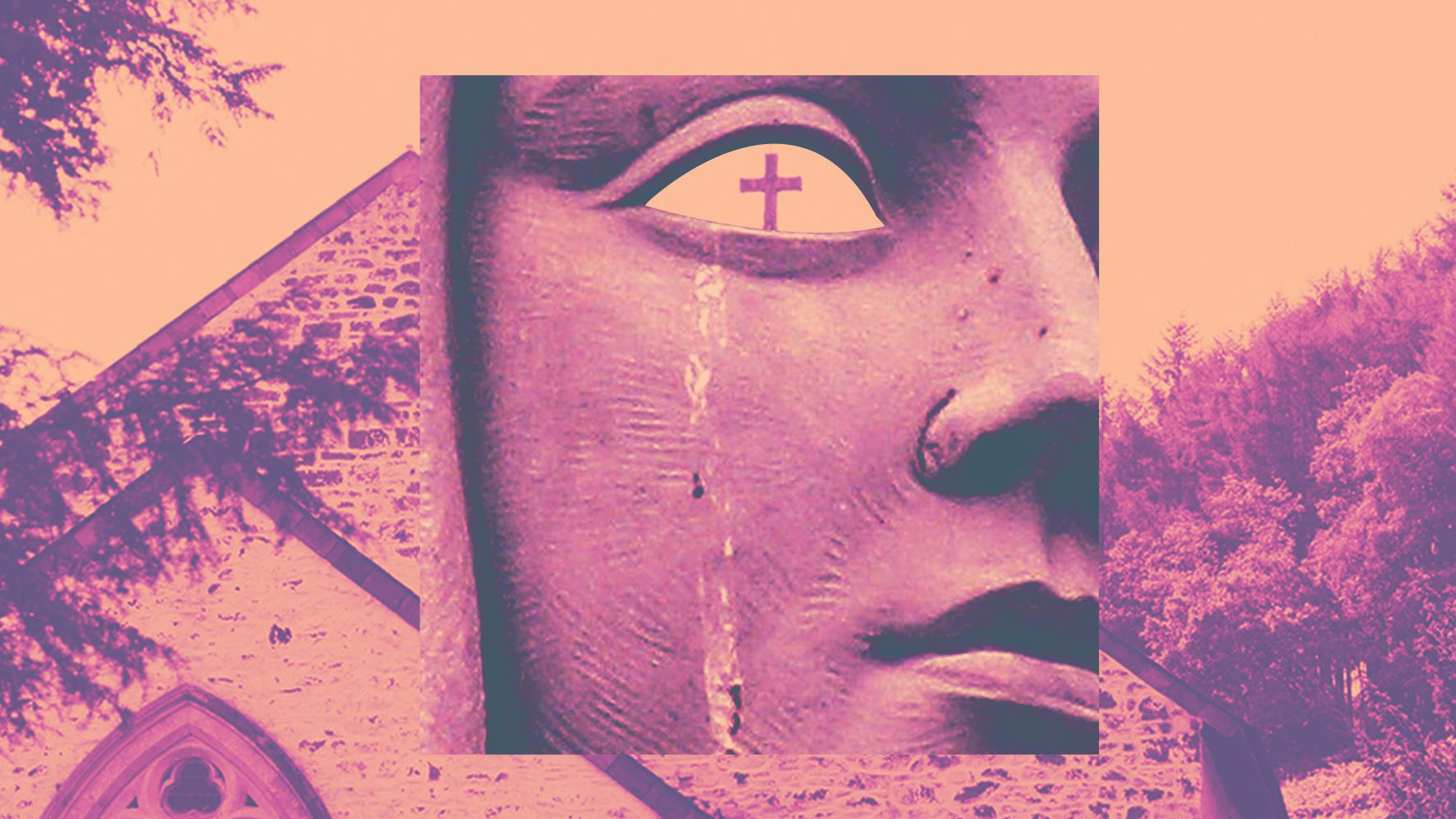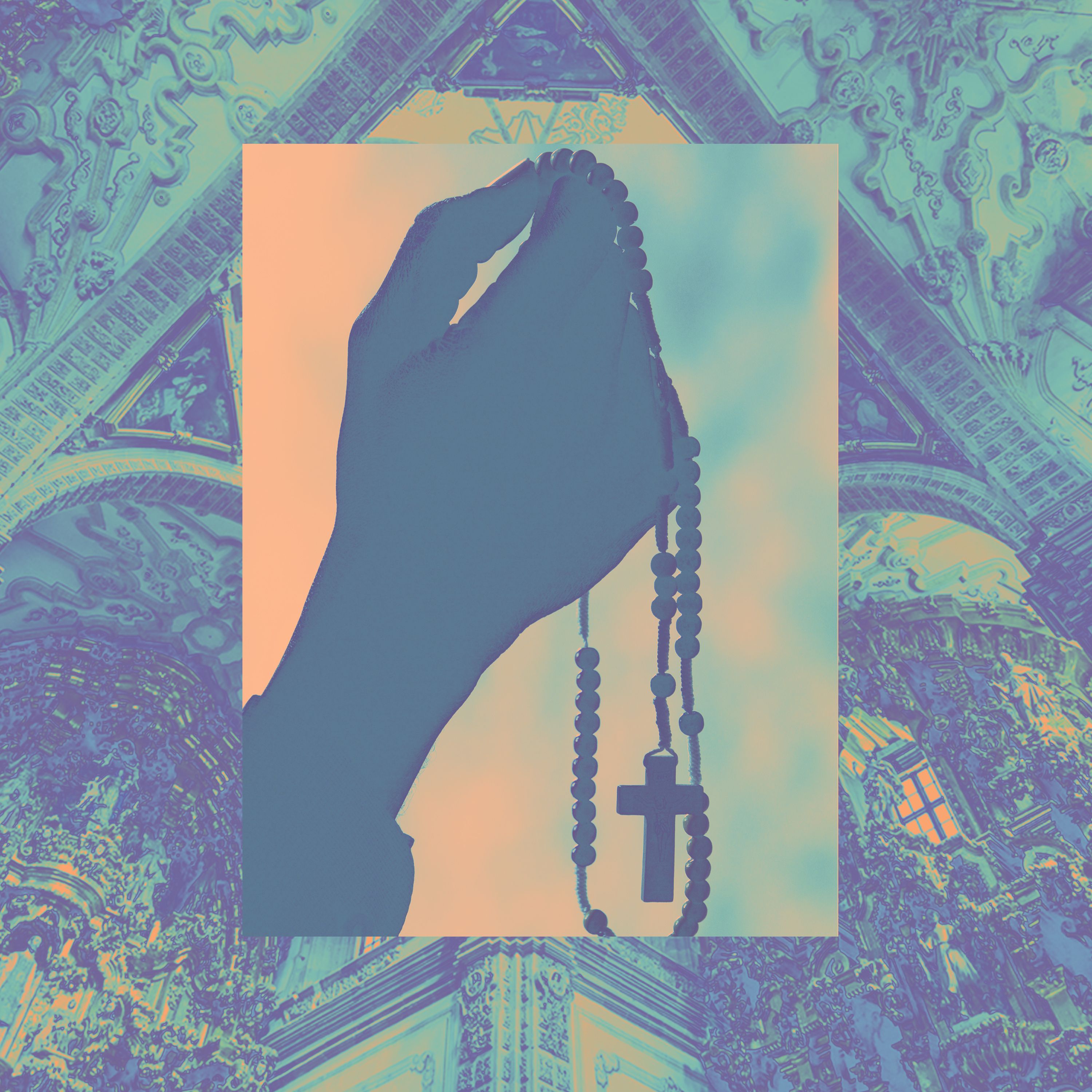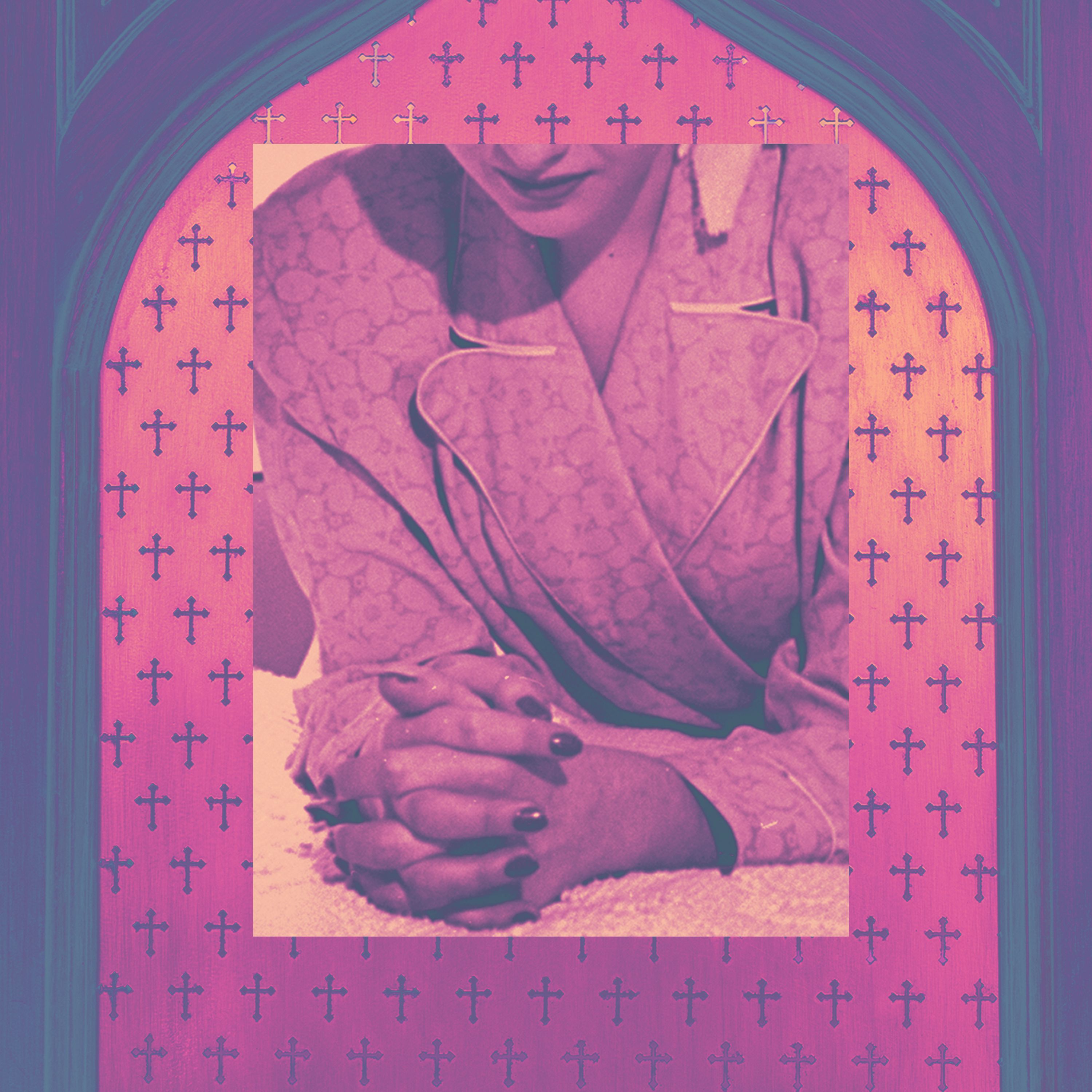To End Sexual Abuse in Churches, Dismantle Purity Culture
The Christian church’s norms provide the perfect cover for sexual predators—and leave their victims feeling like the sinners.


With tears in her eyes, Shannon Dingle approached a female volunteer, the lone woman on an all-male staff at a friend’s church youth group. Dingle was 16 and had finally worked up the courage to disclose that she had been repeatedly raped as a child. “We had just heard a talk on purity and modesty, which was the only context in which sex was ever discussed in the church, so it felt like, Okay, at least we’re kind of in the right area,” Dingle, now 38, recounts. “They were talking about the choices people make, and I kept thinking about how my experiences so far hadn’t been a choice.”
The volunteer’s intended role was to be present if any girls wanted a female shoulder to lean on. So Dingle shared with her the truth about her rapes. “It never occurred to me that [my words] would be met with anything other than understanding.” But Dingle was hit hard by quite a different response: “She asked me if I had repented for my role in what happened.”
Also seared into Dingle’s memory is the time she attempted to confide in a pastor’s wife while on a youth mission. “My abuse included a lot of physical abuse as well, so that’s what I started with, because it was easier. She got this look of horror and disgust on her face and said, ‘But he didn’t rape you, did he?’” Dingle recalls. “It was as if she could understand and accept the idea of physical abuse, but she would look at me differently if there was any degree of sexual abuse.”
For years, Dingle more or less buried these exchanges, eventually starting therapy, marrying, and having children. Then in 2017, she stumbled upon #ChurchToo, a #MeToo offshoot. Spoken-word poet and author Emily Joy and author and trauma researcher Hannah Paasch created the hashtag on November 20, 2017, as an online platform for individuals who’ve experienced abuse at the hands of clergy or whose abuse was reported to clergy, only to be ignored, covered up, or flung back in their faces. “When I was 16 years old I was groomed for abuse by a man in his early 30s who was a ‘youth leader’ in my evangelical megachurch Northwoods Community Church in Peoria, IL,” Joy’s series of tweets began.
By that point, Dingle, a writer and speaker living in Raleigh, N.C., had opened up about her assaults, but not about the letdown and disillusionment she’d felt at church members’ reactions. She tweeted about her experience in response to Joy, signing off “#churchtoo.” Less than 24 hours later, both of their messages were highlighted by Time magazine.

A Toxic Theology
Stories of sexual abuse committed by clergy have made headlines for decades, reaching a fever pitch over the last few years with allegations and investigations in the U.S., Canada, Australia, the Netherlands, the Dominican Republic, Ireland, Brazil, and more. Although top Vatican official Cardinal George Pell’s 2018 conviction for sexually abusing two boys in 1996 was overturned earlier this year, an Australian government report states that he knew about widespread abuse by priests going back to the 1970s. Damning accounts of sexual assault have also emerged in evangelical and Southern Baptist churches. There’s a #mosquetoo movement. Charges have also been lobbied against Jehovah’s Witnesses authorities and a Chinese monastery.
This is progress. And yet when sexual abuse or assault, committed by a religious leader or not, is reported by a woman within the context of the church, the survivor is often blamed, say Joy and Paasch—for her looks, for her sexuality, for her purported lack of modesty. At the root of this warped belief system, Paasch says, is a phenomenon called purity culture.
Get exclusive access to fashion and beauty trends, hot-off-the-press celebrity news, and more.
“It only allows for mandatory abstinence or sex within a heterosexual marriage—or else,” Joy explains. “Or else God will be mad; or else no one will want to marry you; or else you’ll get pregnant and put yourself at risk of going to hell.”
Combine that line of thinking with a general absence of sexual education and a widespread emphasis on male leadership energized by female submission and “purity culture becomes the foundation that rape culture is built on,” Paasch argues. “You have these sexual rules that are very strict and young people who are very uninformed about their bodies or about what it means to make conscious sexual decisions; they’re told to repress, repress, repress. And then someone takes advantage of you and you don’t even know what consent is; you’ve never been taught.”
And then there’s the way in which churches tend to tackle sexual-abuse allegations—in-house and with a generous helping of “this is how God wants it,” leaving survivors feeling powerless, gaslighted, and at fault.
Joy and Paasch both grew up in nondenominational evangelical megachurches. Joy’s father was a Southern Baptist youth pastor who eventually started his own ministry; Paasch’s was a pastor and a Christian missionary. They met in 2009 at Moody Bible Institute in Illinois. Both women, now 29 and 30, respectively, say their childhoods were steeped in purity culture, including the notion that any physical contact with the opposite sex, even hand-holding, was sinful and would cause the man to stumble. At age 16, Joy says, a church youth leader in his early 30s groomed and manipulated her into a nonphysical romantic relationship. Joy says she was viewed by others as “an active participant” and made to apologize to the man. “There was no sense of consent or that this man in a position of spiritual authority was taking advantage of a child,” she says. He quietly left and began working at another church.
Sweeping it under the rug. Out of sight, out of mind. What you don’t know won’t hurt you. Pick your cliché—any of them could aptly describe the way many survivors feel the church thinks about and handles the problem of sexual abuse. JoAnn Stevelos, a public-health advisor, author, and speaker for Stop the Silence: Stop Child Sexual Abuse, sums it up this way: “Not only are the perpetrators given the opportunity to repent and be quickly forgiven, without consequences, but the women seem to be pressured into forgiving without seeking justice, which is their legal right and a basic human right.”
Should the abuser admit wrongdoing in such a case, he’s not only often swiftly forgiven but also applauded…sometimes literally. In 2018, pastor and married father of five Andy Savage sat on a stool before his Memphis megachurch and confessed to a “sexual incident” with a high school student in 1998 when he was her 22-year-old youth minister; his public request for forgiveness was rewarded with a roaring standing ovation. In a recorded New York Times interview, that student, Jules Woodson, responded by explaining, “I just remember him unzipping his pants and asking me if I would suck his dick.…I looked up to him, I trusted him, so when he asked me to do that, I thought…This is a man of God I look up to.”
“Male church leaders are often considered the ultimate authority, the divine mouthpieces of God,” says Paasch. “Victims are told this was a sin that occurred between two parishioners, and God wants them to forgive and forget. Then, if you don’t forgive, you’re not a good Christian. [Savage] is the real-life example of this theology playing itself out.”

Stained Glass
The #ChurchToo movement and its hashtag have resonated with female survivors, particularly, who have historically been left out when discussing clergy sexual abuse. Stevelos says that nearly 20 percent of known clergy-sexual-abuse survivors are female—a number corroborated by a 2018 analysis of 326 cases of alleged child-sexual-abuse cases that occurred at or through activities provided by Protestant Christian congregations. When the John Jay College of Criminal Justice was granted access to official Catholic church records in writing its seminal report The Nature and Scope of Sexual Abuse of Minors by Catholic Priests and Deacons in the U.S. 1950–2002, it found that 4 percent of all U.S. priests active between 1950 and 2002 had allegations of sexual abuse made against them. That number is likely low; only a third of child sexual-assault incidents get identified, and fewer even get reported, according to Stop the Silence.
Stevelos knows from personal experience; she is a member of the nearly 20 percent of clergy-abuse survivors who are female. She was just 5 years old when the new neighborhood priest began touching her inappropriately. The abuse increased in intensity for nearly a decade. (She prefers not to discuss specifics for fear of retraumatizing other survivors.) Stevelos attempted to reach out for help on four separate occasions as a child; each time, she was let down by the adults in whom she confided. At age 9, she told a friend, who told her own mother, who then forbid the friend from playing with Stevelos “because I was making up stories and could get in trouble”; at 14, she told another friend’s mother—a social worker. “She advised that I ride out the situation until I was old enough to be on my own.”
Paasch says the consequences of purity culture and emphasis on unquestioned male authority can have a trickle-down effect on girls and women that is felt outside the walls of any house of worship. By the time Paasch arrived at her Christian college, she’d shed some of her religious leanings—she wore red lipstick and curve-hugging clothes, for example—but says purity culture on campus translated that style, along with her self-described “open, responsive demeanor toward men,” as “me being a slut, even though I was a virgin.” Seemingly overnight, Paasch had morphed into the “loose woman” Proverbs 7–10 had warned her about.
Then, in 2017, Paasch was slipped a drug and raped on a date. Though the assault didn’t take place within the physical confines of the church, she believes evangelical purity culture played a major role. “I grew up being taught wildly misinterpreted scripture like ‘The heart is deceitful above all things, and desperately wicked; who can know it?’ Purity culture compelled me to ignore my intuition, which was sending me warning signals early on in the date. I automatically assumed that whatever men want is correct.”

The Path Forward
Leaders of the #ChurchToo movement are emphatic that change cannot come without, as Joy puts it, “the total dismantling and rejection of purity culture.”
“We need to stop believing that women have the responsibility to dress modestly to avoid causing others to stumble; that being heterosexual and cisgendered is ‘God’s best’ and LGBTQ identities are symptomatic of broken sexuality; that men are to be the leaders in the church and the family, with women following.”
Preventing such abuses in the future will also ultimately require unpacking and tackling the interfamilial, political, and economic structures that have supported the phenomenon for so long. Says Pamela J. Pine, founder and CEO of Stop the Silence, “It’s not just the priests; it’s church members, police. So many people with so much clout and power in society have been protecting each other. You have an entire establishment creating an additional wall of secrecy around what has happened to these boys and girls.”
For instance, in the John Jay College report, of the 4 percent of all U.S. priests who had a sexual-abuse allegation made against them between 1950 and 2002, only 6 percent have been convicted and about 2 percent have received prison sentences to date.
Today, we are moving toward a reckoning. Approximately 152 of the 196 dioceses in the U.S. have released names of credibly accused predator priests, according to bishopaccountability.org. (You can see a list here, complete with links to your local archdiocese.)
On March 20, 2018, about two months after he had received that standing ovation, Savage announced his resignation, saying, “I sincerely want to get this right. I want the church to get this right. I want Jules, finally, to see it gotten right.”
Despite some progress, coming forward still remains a challenge. “My DMs are full of women with stories that they’re not ready to share or are afraid to share,” Joy reveals. (Everyone, regardless of gender or sexuality, is welcome to use #ChurchToo. It simply seems to have registered particularly strongly with women.) Adds Paasch, “Once you share, you’re a pariah. You’re ostracized by your church and your community.”
It only adds to the pain and trauma. Many clergy-abuse survivors aren’t ready to throw away their religious lives and beliefs. “When you walk away from your church, you’re walking away from your community,” Stevelos says, “but people feel a need to believe in something, [a way] to organize their thoughts and self-soothe.”
For Dingle, still recovering from PTSD left over from both her assaults and the repeated dismissals by church leaders, solace has finally been found at a United Methodist church—one with a black female pastor at the pulpit. “Any man exercising authority without care or empathy is a trigger for me, and I don’t know if my faith in God and hope for the church can survive that from a male leader again, so I’m done with male pastors for the foreseeable future. I cherish my God and the church too much to put my love for either in jeopardy under male leadership again.”
Stevelos still has close ties to Albany, New York, the city where her abuse began and where 78 priests (including a bishop) have been accused of sexually abusing children. She published a novel, Howard Be Thy Name, based heavily on her own story, in hopes of raising awareness of child sexual abuse, to make disclosure easier and safer for children “so people aren’t carrying this burden until their 40s or 50s and the dam finally bursts.” No longer a practicing Catholic, Stevelos says Buddhism has helped her heal. The name of the priest who hurt her was finally made public last year, after more than two decades during which it was “protected by the veil of secrecy created by cloistered institutions such as the Catholic Church,” according to her lawyer, and her spirit is buoyed by the passing of the Child Victims Act in New York, which increases the statute of limitations for cases of child sexual abuse. (Formerly 23 years old in civil cases, it has been extended until the age of 55.)
Joy attends a “very small, very gay Episcopalian congregation” and says that while her personal beliefs have shifted and evolved over time, she still finds comfort in the motions and community of church. Paasch, who also happens to be the creator of the #Millenneagram, which is a modern take on the ancient Enneagram personality typing system, says she doesn’t see herself pew-sitting ever again but still considers herself a person of faith. Neither of them wants to see the church die; rather, they both want to see it utilized as a vehicle for justice.
Their views toward purity culture, though, are not so charitable. “I’m not saying we need to be nicer about how we teach purity or that we need to make sure that the men in charge are better men and actually report instances of abuse,” Joy says. “I’m saying we need to burn the whole damn system to the ground.”
Leslie Goldman, MPH, is a freelance writer specializing in health, women's issues, and parenting. She is a regular contributor to Cosmopolitan, O, The Oprah Magazine, Women’s Health, Parents, and more. She once touched Beyoncé's email (so soft!). Follow her on Twitter @lesliegoldman.
